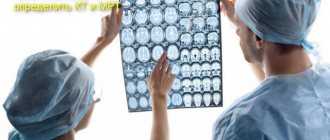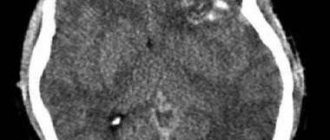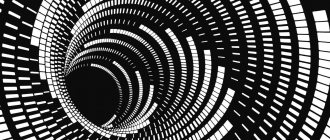Table 2 Psychophysiological characteristics and prognosis of conditions occurring with disorders of consciousness
| State | Self-centeredness | Sleep-wake cycle | Feeling pain and suffering | Forecast |
| Persistent vegetative state | Absent | Saved | No | Depends on the reason |
| Coma | Absent | Absent | No | Recovery of consciousness Persistent vegetative state Death within 2-4 weeks |
| Brain death | Absent | Absent | No | No recovery |
| Locked-in syndrome* | Saved | Saved | Yes | Recovery is unlikely, persistent tetraplegia, with good care, patients live a long time |
| Akinetic mutism** | Absent | Saved | Yes | Recovery is extremely unlikely (depending on the cause). |
| Dementia | Preserved, but lost in later stages | Saved | Yes. In later stages it is lost. | Progressive deterioration. Rate of progression depends on cause |
*Locked-in person syndrome is characterized by anarthria and tetraplegia, with preservation of the main manifestations of consciousness; this condition should be clearly distinguished from other types of disorders of consciousness.
**Akinetic mutism: refers to the condition originally described by Cairns (1941), complete wakefulness with absence or weakness of speech activity and voluntary movements. These patients show signs of conscious behavior, but the desire or attempts to speak or move are grossly disorganized. A large number of clinical and pathological variants of this condition have been described. Most often, akinetic mutism occurs with bilateral damage to the reticulocortical and limbic-cortical connections in the central part of the brain, extending from the paramedian areas of the reticular formation to the midbrain and diencephalon, basal and medial areas of the frontal lobes (Plum & Posner, 1980). N Engl J Med 1994; 330:1499. quoted from https://www.uptodate.com/contents/approach-to-the-adult-patient-with-syncope-in-the-emergency-department
Determining whether a patient belongs to any of the groups is important for prognosis, development of approaches to treatment, distribution of resources, and resolution of medico-legal issues.
Open and closed TBI
In the case of an open craniocerebral injury, damage to the skin is observed. The bones of the skull or even deeper soft tissue of the brain may be visible through the wound. If the injury penetrates the lining of the brain, it is called a penetrating injury. With an open head injury, the situation is complicated by a high risk of microbes entering the wound, which can lead to infection and suppuration.
With closed head injuries, the skin may be damaged (scratches, abrasions), but the tissues that are deeper remain intact. The integrity of the brain membrane is also preserved. The consequences of a closed craniocerebral injury may not appear immediately; there are often cases of long-term consequences after some time.
Closed and open traumatic brain injuries can be divided into the following types:
- Shake. Damage that does not cause significant disruption to brain function. All symptoms of a concussion can be observed for a certain period of time (several days), after which they completely disappear. If symptoms persist for a long period, this is a sign of a more serious head injury.
- Compression. Pressure on the brain can be caused by a developed hematoma or the presence of air in the skull; less commonly, it can be caused by a foreign body.
- Brain contusion. This damage can be mild, moderate or severe.
- Diffuse axonal damage.
- Subarachnoid hemorrhage.
The combination of these injuries can be different, for example, bruise and compression, or hemorrhage with bruise. Often there may be hemorrhage with the presence of a bruise and compression of the brain by the hematoma.
What are the risks of rehabilitation measures after traumatic brain injury?
TBI rehabilitation performed by qualified and experienced professionals is unlikely to cause problems. But if you are not professionally literate, there is always a risk that parts of rehabilitation, such as physical or occupational therapy, could lead to new brain injuries or worsen existing symptoms. This risk occurs if rehabilitation measures are not carried out properly. This is why it is important to work closely with certified rehabilitation specialists who will take adequate measures to prevent worsening symptoms and prevent problems.
Severity of TBI
For some people, the consequences of a traumatic brain injury may include frequent headaches, while for others it can be much more complicated, even leading to complete disability. This is influenced by certain factors:
- Severity. The more serious the injury and the deeper its penetration, the more difficult the patient’s recovery.
- Health care. The faster the injured person receives qualified medical care, the greater the chances of a successful recovery with minimal or no consequences.
- Age of the victim. The older a person is, the more difficult it is for his body to cope with such an injury.
The severity of TBI is characterized by: mild, moderate, severe. Based on statistical studies, in people under 20 years of age there are no consequences at all after a slight head injury. In cases where the victim is over 60 years old and the severity of the traumatic brain injury is severe, the probability of death is 80%. If you do not seek medical help as soon as possible, complications of a traumatic brain injury cannot be avoided.
First aid
The arriving ambulance team examines the victim and clears the airways of foreign objects. If there is no breathing, resuscitation is performed. Bandages are applied to the affected areas to stop bleeding. The victim is anesthetized or ice is applied to the injury site. In case of complex injury, including damage to the neck and back, splints are applied for immobilization. The victim is sent to the neurosurgery department for diagnosis and first aid.
mild TBI
A slight injury to the skull may not even leave any consequences, or they will be barely noticeable and will pass quickly. More often, after a concussion or a minor injury, a person loses consciousness for a while, and sometimes even memory. The consequences of mild TBI are completely reversible and last for a short period of time:
- headache;
- dizziness;
- nausea and vomiting;
- sleep disorder;
- irritability;
- rapid fatigue.
After a mild traumatic brain injury, a person again begins to lead an ordinary life literally two weeks after the course of treatment. In cases where head injuries are repeated more than once, head pain and memory impairment can be observed in a person throughout his life, but do not affect his ability to work.
Notes
- Saatman K. E. (2008). "Classification of traumatic brain injury for targeted therapies." Journal of Neurotrauma 25
(7):719–38. DOI:10.1089/neu.2008.0586. PMID 18627252. - Marion D.W.
Introduction // Traumatic Brain Injury / Marion DW. - Stuttgart: Thieme, 1999. - ISBN 0-86577-727-6. - Valadka AB.
Injury to the cranium // Trauma / Moore EJ, Feliciano DV, Mattox KL. — New York: McGraw-Hill, Medical Pub. Division, 2004. - P. 385–406. — ISBN 0-07-137069-2. - Parikh S, Koch M, Narayan RK (2007). "Traumatic brain injury". Int Anesthesiol Clin 45
(3):119–35. DOI:10.1097/AIA.0b013e318078cfe7. PMID 17622833. - Jennett B (May 1998). "Epidemiology of head injury". Arch. Dis. Child. 78
(5): 403–6. PMID 9659083. - Diseases of the Nervous System. A guide for doctors, ed. prof. N. N. Yakhno, prof. D. R. Shtulman. In 2 volumes. M: Medicine, 2001. Pp. 711
- ↑ 1234
Berkowitz's Pediatrics: A Primary Care Approach, 5th Edition Copyright © 2014 American Academy of Pediatrics p.399
Moderate TBI
Moderate head injuries are severe contusions, damage to parts of the brain, or a skull fracture. They are more serious and can greatly affect a person’s well-being:
- speech disorders;
- partial loss of vision;
- paroxysms of the limbs;
- mental disorder;
- memory loss;
- heart rhythm disturbances.
Recovery from such damage takes a period of one to two months. Sometimes more is required.
Severe TBI
After a severe head injury (severe brain contusion, open skull fracture), there can be very serious consequences that can completely change the life of the victim, or even lead to death. People often end up in a coma after suffering a severe traumatic brain injury.
Even in cases where a person is preserved to live a meaningful life with the help of professional medical intervention, there may not be a complete recovery from this injury. Severe TBI can have very significant complications and consequences:
- memory losses;
- loss of vision;
- hearing and speech loss;
- breathing problems;
- failure of the heartbeat;
- loss of sensation;
- frequent attacks of paroxysm;
- epilepsy attacks.
All this may not appear immediately; long-term consequences often occur, years after the incident, after which they remain with a person throughout his life. Also, severe TBI can lead to even more serious consequences:
- Partial disability. These may be mental or neurological pathological disorders in which a person loses his ability to work, but he can still take care of himself.
- Complete disability. The victim needs constant care, since he can no longer do anything on his own.
- Coma. The depth of the coma can vary and lasts a very long time. At the same time, the body continues to function, all organs remain involved, but the person himself does not show any reaction to what is happening around him.
- Death.
Severe head injuries leave a lasting impact for life. Often people who have experienced such damage completely change their character and experience uncontrolled attacks of aggression.
What happens during rehabilitation after a traumatic brain injury
Each person's needs and abilities after TBI are different. By contacting the community of rehabilitologists Irakli Pozharisky, the client will have a rehabilitation program developed specifically for him. Many medical professionals and specialists will participate in this program.
An individual rehabilitation program may include any or all of these procedures:
- physiotherapy;
- physiotherapy;
- breathing exercises;
- psychiatric correction;
- psychological support;
- psychotherapeutic intervention;
- speech therapy;
- social support.
Symptoms of TBI
Symptoms of a traumatic brain injury usually appear immediately after the accident, but in some cases it may take a period of time. Regardless of the severity of the head injury, the following symptoms of TBI are determined:
- Loss of consciousness. A person may become unconscious almost immediately after the incident. The duration of loss of consciousness depends on the severity of the injury. For mild TBI, this period is up to 5 minutes or without loss of consciousness. In the case of moderate severity, from 5 to 15 minutes, and in severe cases, from 15 minutes to 6 or more hours.
- Head pain and dizziness. After the victim regains consciousness, severe headaches, loss of coordination with dizziness may appear.
- Nausea and vomiting. Immediately after a person comes to his senses, pronounced nausea appears, which is often accompanied by vomiting.
- Visible injuries. In some cases, bleeding, damage to soft tissues and skull fragments can be observed on the head.
- Hematoma. In the case of a closed TBI, hemorrhage occurs in the soft tissues, and hematomas are formed around the eyes or behind the ear.
- Leakage of cerebrospinal fluid. From a fracture of the base of the skull, defects of the cranial bones appear and the dura mater of the brain is torn. These conditions accompany the leakage of fluid that provides nutrition and metabolism to the brain.
- Seizures. With such damage, attacks of paroxysm are possible. The muscles of the arms and legs involuntarily begin to contract. This may be accompanied by loss of consciousness and urination.
- Amnesia. Appears after an incident. More often than not, a person does not remember a certain period of time before the injury, and the moment of its receipt, but sometimes this can also be the time period after receiving the TBI.
Clinical examination of the patient
Recommendations for assessing response in neurocognitive disorders
- Adequate stimulation is carried out only when it is certain that the patient's level of wakefulness is maximum.
- It is necessary to eliminate the causes that cause quantitative disorders of consciousness (taking sedatives, epileptic seizures).
- Attempts to elicit a response to verbal stimulation should not be aimed at eliciting movements, which are often performed reflexively.
- Research into the ability to carry out commands should include the types of motor activity available to the patient.
- Many different behavioral responses must be examined using a diverse range of stimuli.
- The study should be carried out in a calm environment.
- Initial estimates should be verified repeatedly using multiple re-assessments and acceptable response measurement approaches.
- Specific quantification techniques and tools may be useful.
A systematic approach to assessing patients with impaired consciousness includes the following steps:
Assessment of the functioning of the brain stem and other subcortical formations
- Pupillary reactions, blink reflex to visual stimuli.
- Eye movements, gaze deviations.
- Oculovestibular reflexes (oculocephalic reflex, calorimetric test).
- Corneal reflexes.
- Vomiting reflex.
- Breathing pattern.
- Decerebrate postures.
- Other postural reflexes, assessment of muscle tone.
Assessment of cortical functions
- Evaluation of voluntary actions
- Purposeful complex movements (including isolated motor control involving the cortex) compared with postural (decortication, decerebrate) or reflexive or stereotyped, monotonous (subcortical structures mediated) movements. Note: Pilon & Sullivan note different profiles of postural tone relationships for VS and SMS. Patients with VS exhibit classic decerebrate, decortication, and hypotonic postural features, whereas patients with SMS exhibit symmetrical or asymmetrical global flexor postures. However, there is no characteristic reflex posture with absolute diagnostic significance for separating these two groups.
- Involuntary vocal and verbal activity.
- Eye movements (signs of fixation of gaze or tracking of an object, differentiated from involuntary eye movements not related to the stimulus, or fixed gaze); responses to artificial or natural external stimuli.
- Tracking or fixating the gaze on various stimuli (use objects that do not make sounds: family photos, pictures of faces, money, mirror)
- Verbal stimulation (patient's name, commands, greeting): Begin with simple commands that encourage actions within the patient's ability.
- Eye commands: “look here”, “blink twice”.
- Commands for limbs: “show thumb”, “show 2 fingers”, “raise your hand”.
- Commands for the oral muscles: “open your mouth”, “show your tongue”
- Commands for the whole body or axial muscles: “turn your head”, “lean forward”.
- Ask the patient to stop the movement or hold the limb to highlight spontaneous repetitive movements.
- Painful stimulation.
- Assess the localization and purposefulness of defensive reactions, compare them with reflexive and generalized, stereotypical movements, evaluate facial expression
- Responses to random external stimuli.
- Assess attempts to grasp or perform actions with objects surrounding the patient (clothing, objects at hand).
- Observe changes in facial expression as you respond to stimuli such as a familiar voice, dialogue, pictures, music, etc.
- Notice attempts at purposeful movement in bed, in a chair, and while walking.
- Note gestures when communicating emotionally (yes/no signals).
Diagnosis and treatment of TBI
People with traumatic brain injuries are hospitalized in a hospital regardless of the severity of the injury. The patient undergoes a full examination, X-rays of the skull bones are taken, and a CT scan of the brain is performed. After this, the doctor determines an accurate diagnosis and prescribes a special course of medical measures.
Treatment after traumatic brain injury is symptomatic care. If headaches are present, analgesics are prescribed. If there is severe autonomic dysfunction, the patient is prescribed beta blockers and bellataminal. A course of vascular and metabolic therapy may also be prescribed to speed up the period of recovery of impaired brain functionality. A week after the injury, vasotropic and cerebrotropic therapy is prescribed. A combination of vasotropic (stugeron, teonicop, etc.) and nootropic (nootropil, picamilon, etc.) therapies is recommended.
Treatment of mild traumatic brain injuries is primarily to prevent secondary brain damage. Multiple repetitions of brain injuries in the patient's history entail various consequences. They can continue throughout a person’s life and will interfere with leading an active lifestyle.











